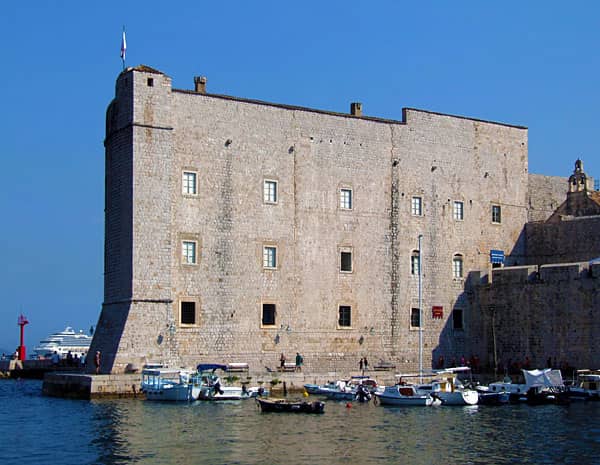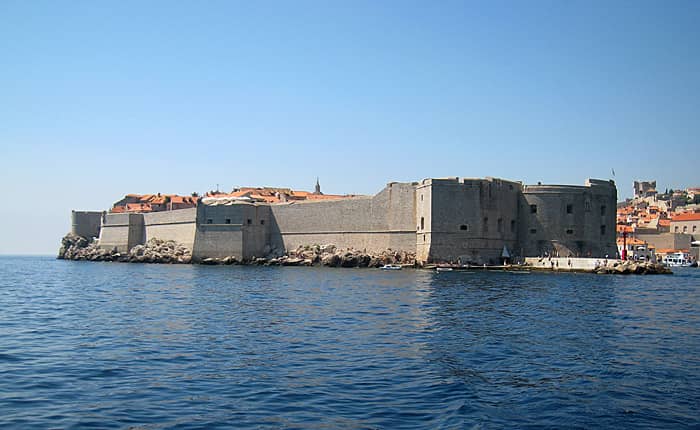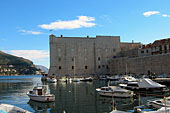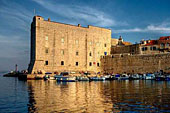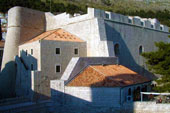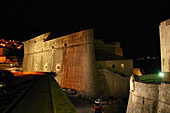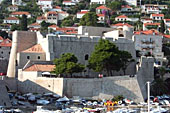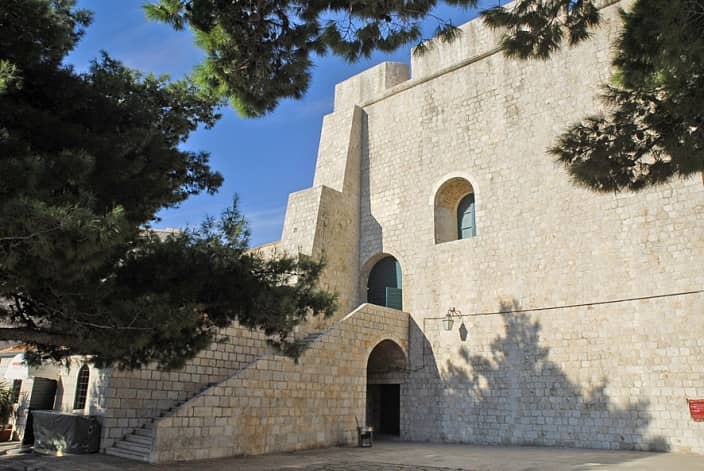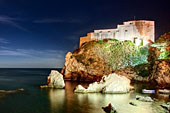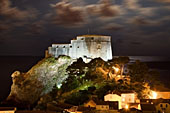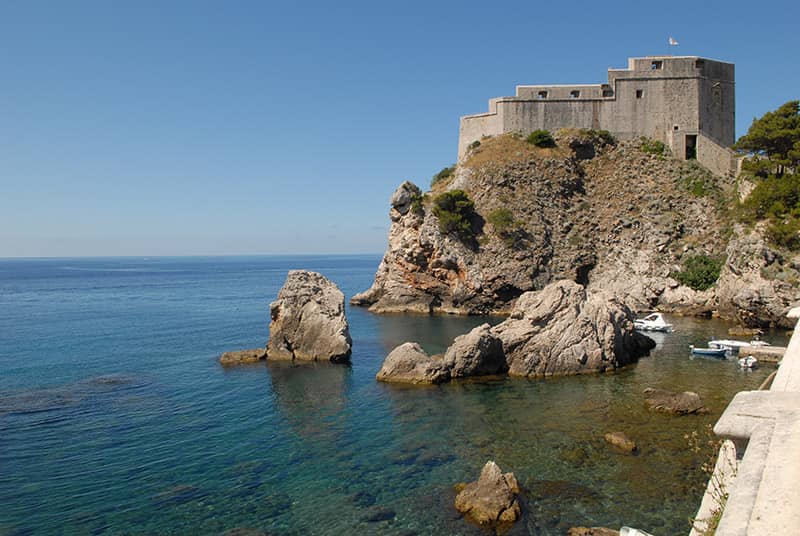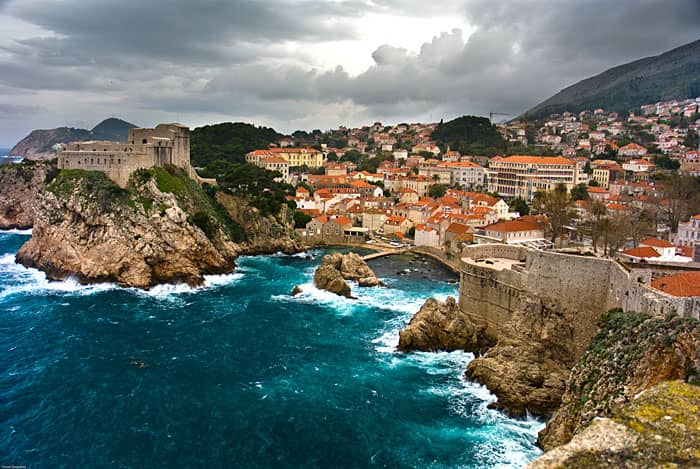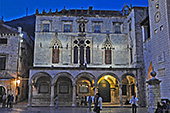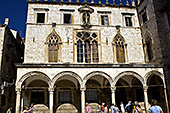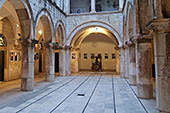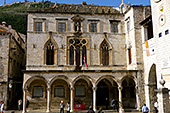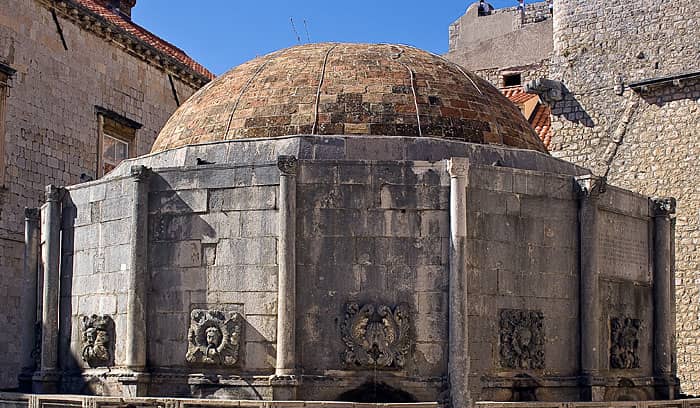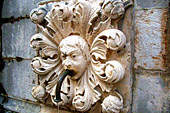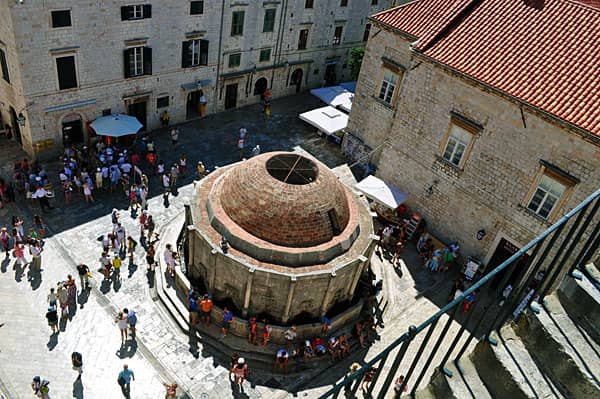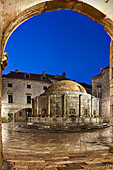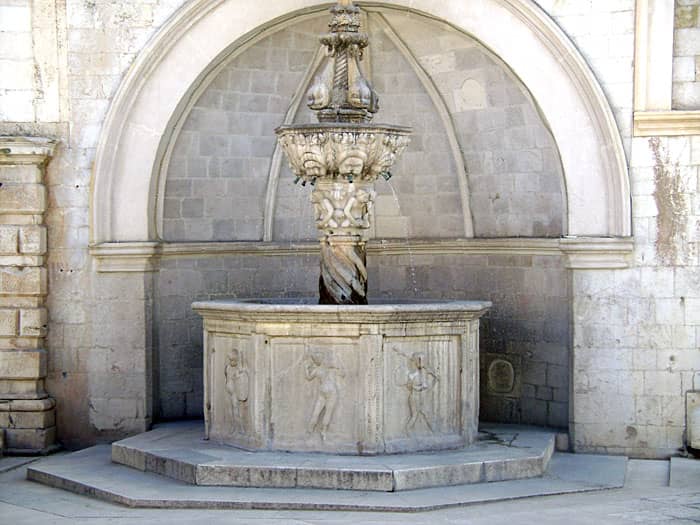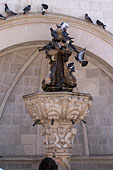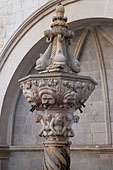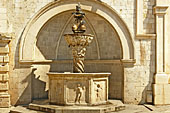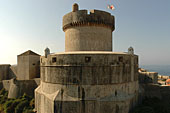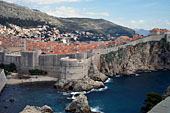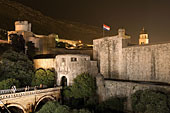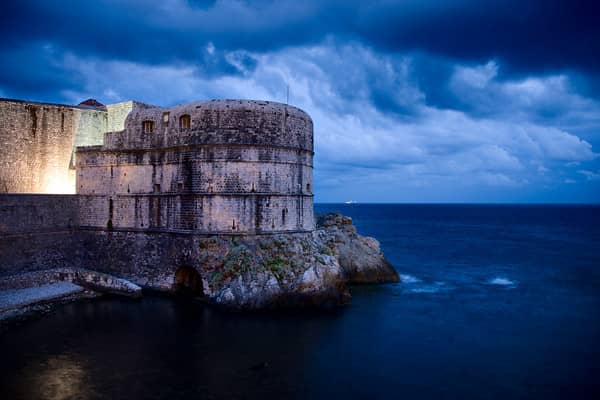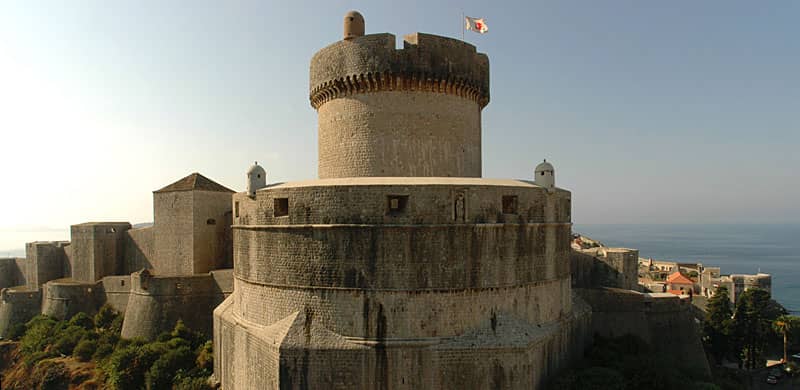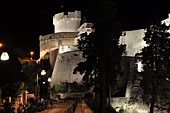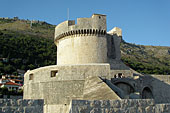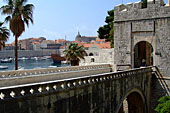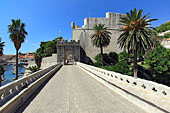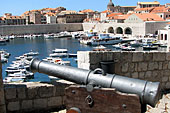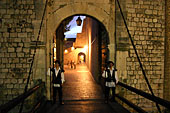Fortress St. Ivan
Located at the south part of the city walls, served as the protector of the City Harbor. It was erected in four stages between 1346 and 1557. Its final look dates from the 16th century. During night the city harbor was closed with a chain which was stretched from St. Ivan fortress to Kaše - the breakwater built in 15th century. Today, St. Ivan Fortress hosts three museums.
On the ground floor is the Aquarium, stocked with fish from various parts of the Adriatic Sea. On the upper floors are the Ethnographic Museum and a Maritime museum in which four sections are devoted to the Dubrovnik Republic maritime period, the age of steam, the Second World War and to the techniques of sailing and navigation.
Location: Old Twon Dubrovnik
Fortress Revelin
Built in the 16th century (1500 - 1538) at the eastern side of the city, outside the city walls, in the form of an irregular square. It was designed by the architect Anton Ferramollino. The fortress was built to protect the City Harbor, Ploče Gate, and the City Bridge. Its enormous terrace also makes a fine natural stage for performances in summer.
Location: Old Town Dubrovnik
Fortress Lovrijenac
Located at the western side of the Town outside the City Wall at a 36 meters high cliff. It dominates, both the sea and the land entrances to the Town from the west. According to old scripts it was built in only three months. Today its interior is one of the most dignified stages in Europe, a well-known place for Shakespeare's Hamlet performances.
Fort Lovrijenac was used as one of Game of Thrones, King's Landing filming locations and settings in Dubrovnik.
Location: Old Town Dubrovnik
Palace Sponza
Throughout the times of the Dubrovnik Republic it had different purposes and was used as a custom house, a mint and main warehouse ( known at different times as the Pontik, Divona or Dogana). Sponza was one of the more important buildings in the city and remained in continuous public use until the end of the 19th C. Sponza was designed by Paskoje Milièeviæ, built by Petroviæ, Radivojeviæ, and the Andrijiæi brothers (1516-1522). It represents a harmonious blend of Gothic and Renaissance architecture; at the ground floor there are monumental renaissance arcades; at the first floor we find elegant gothic monofores and trifores; the second floor is decorated with Renaissance windows, while the roof is built in Gothic style. The interior of Sponza consists in a round and spacious court, arranged as a double cloister, with round arches below and slightly pointed arches on the first floor. The first floor was used for social gatherings and meetings of learned and literary societies. The ground floor houses exhibitions of artists and festival concerts and contains the original 16th C mechanism that controls the town bell and clock (called Zelenci - Maro and Baro).
Location: Old Town Dubrovnik
Big Onofrio's Fountain
Located at the open space right after passing Pile gate and entering the main street of Old Town Dubrovnik. It is a 16-sided drinking fountain built by Onofrio de la Cava (1438. - 1444.). The Fountain is part of the town's water supply system which Onofrio managed to create by bringing the water from the well in Rijeka Dubrovačka. The well is located 20 km from Big Onofrio's Fountain and this construction was a masterpiece of that time.
In 1436. the Dubrovnik Republic concluded a contract with the Neapolitan architects Onofrio della Cava and Andriuzzi de Bulbito about the construction of a water supply system inside the Old Town. The first part of that project was already completed in 1438, and Onofrio continued working on it until he left Dubrovnik in 1443. Onofrio's Large Fountain was sculpted and decorated after Onofrio's project by Petar Martinov from Milan and local artisans.
The fountain suffered heavily in the 1667 earthquake when almost all decoration was damaged except 16 stone-carved water openings called maskerons.
Location: Old Town Dubrovnik
Small Onofrio's Fountain
Built by Petar Martinov in 1441 in the shape of an octagonal basin with defaced sculptural panels, from which rises a 'baroque-Gothic' column recalling the fountains of Viterbo.
Location: Old Town Dubrovnik
City Walls
The City Walls are among the finest and most complete in Europe. They protected the freedom of Dubrovnik Republic for centuries. They surround the entire Old City with their 1940 meters of length and up to 25 meters of height. The whole City Wall complex was built from the 8th until the 16th century, consisting of an inner and outer section. There are five bastions, 3 circular and 12 square and rectangular towers, two corner towers, and one huge fortress. The outer section of City Walls consists of a lower wall, having 10 semicircular bastions built by the famous Italian architect Michelozzo. The town is defended by two more separate fortresses, at Revelin on the eastern side and Lovrijenac on the southwest side. The moat ran around the outside section of the City Walls.
Location: Old Town Dubrovnik
Fortress Minčeta
The most massive tower within the Old Town, located at the north side of the City Walls, provides one of the finest views to the city, its streets and buildings. It is the architectural work of Ranjina, Michellozzo Michellozzi, and was finally finished by Juraj Dalmatinac. At first it was a smaller square-shaped building, later on some parts were added, finally receiving its current look in 1464. Some Summer Festival performances take place at the terraces of this magnificent historical monument.
Location: Old Town Dubrovnik
Ploče Gate
Entrance gate to Old Town Dubrovnik from the East. Outer Ploče Gate is built by Miho Hranjac in 1628., while the wooden drawbridge and twin-spanned stone bridge (15th C) by Paskoje Miličević are similar to those at Pile Gate. Over the bridge there is the statue of St. Blaise, the patron of Dubrovnik. It has inner and outer sections, while the approach is via a stone bridge. Built into Ploče's outer section is Revelin Fortress, that used to serve as a lookout point.
Location: Old Town Dubrovnik
